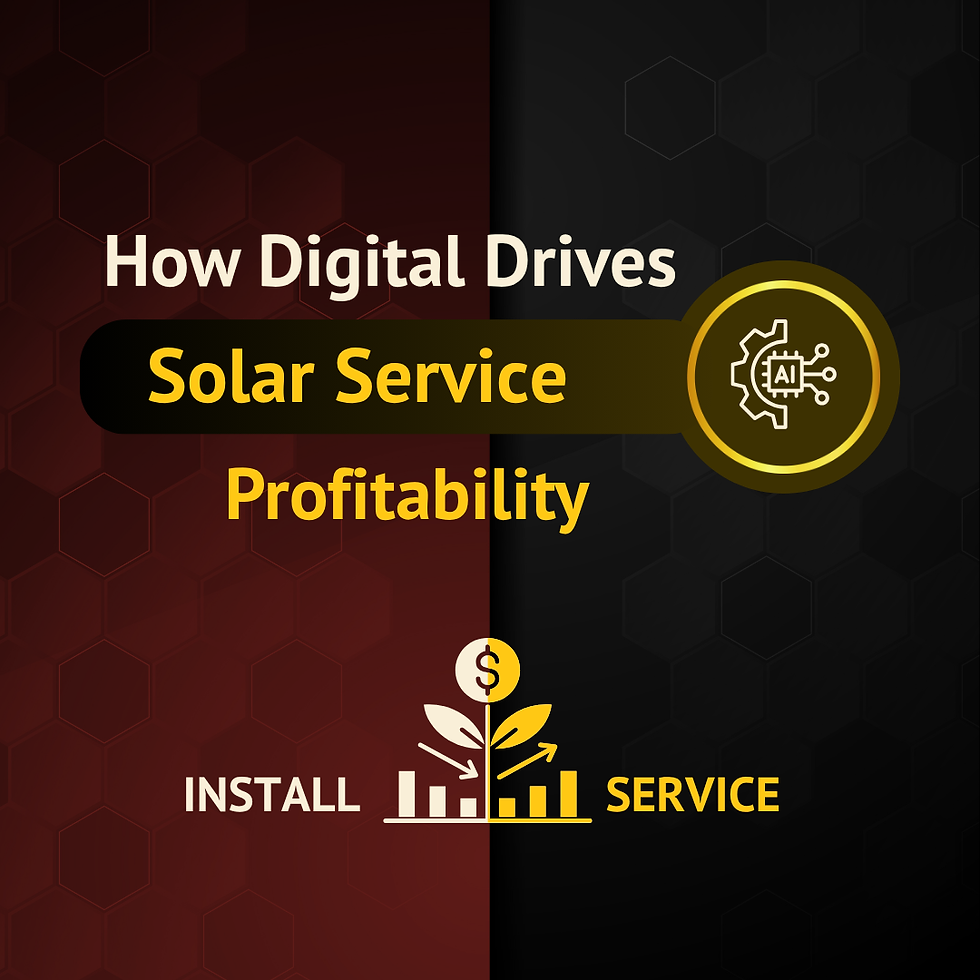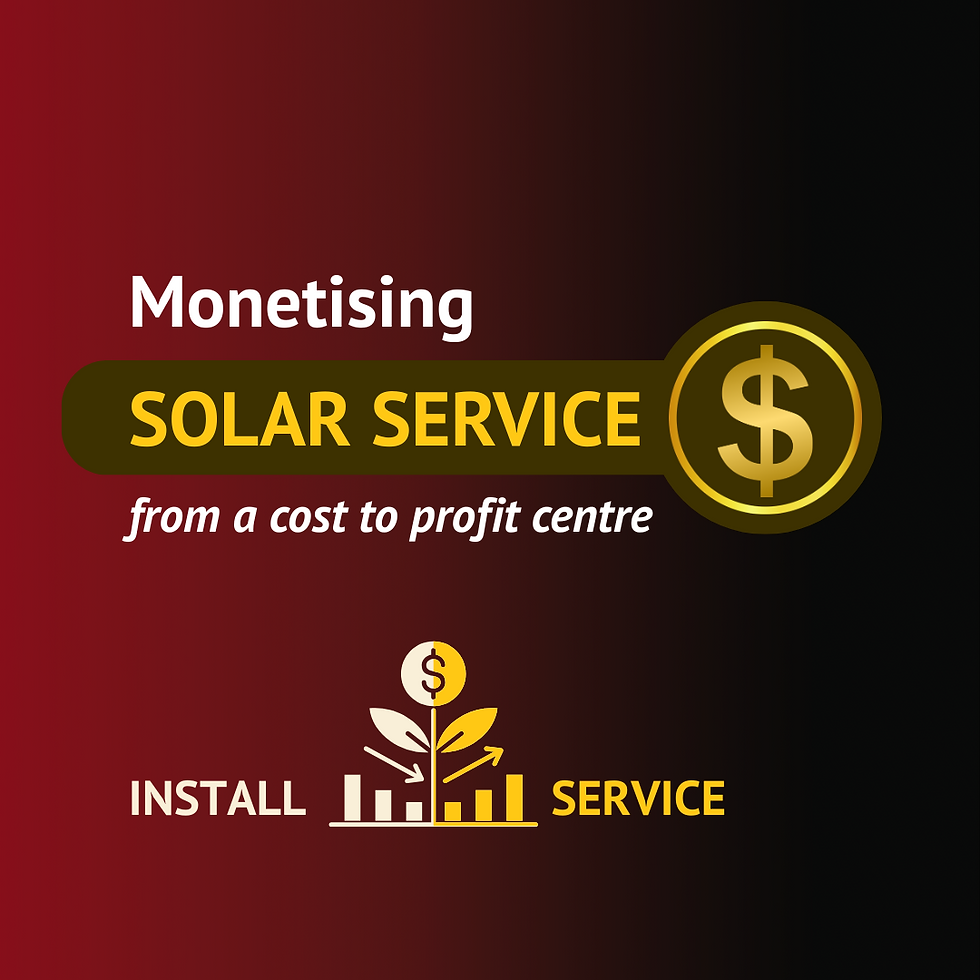How to improve generation of solar power plant ?
- Siva Harsh S

- May 3, 2023
- 4 min read
Updated: Dec 2, 2023

In our previous blog, we discussed solar underperformance causing 8% to 15% loss in solar plants, and the different losses in detail. (Read the blog on solar underperformance here). In this blog we will discuss two aspects: (1) how we can measure the performance of solar plant, and (2) how we can improve the performance of solar installations.
The problem of measuring Solar Performance

As Lord Kelvin once said, "If you cannot measure it, you cannot improve it." By accurately measuring and monitoring the performance of solar installations, we can identify areas for improvement and optimise the efficiency.
Solar power plants generation depends on multiple variables such as
Solar component Specification: specification of solar inverters, modules, structure azimuth and inclination etc.
Climatic conditions: irradiation, temperature, cloudiness, wind speed etc.
Soiling: soiling due to pollutants in the air, traffic or other externalities
Shading: from nearby obstructions
It is not cost-effective to install and maintain a weather station with the required sensors to accurately collect and model all these parameters for a roof-top solar power plant. So we will have to work with third-party weather data providers or historical data providers to derive the potential generation from a solar plant using physical/theoretical solar generation models.
However, the physical models fail to capture the complexity and uncertainty associated with the data. So, we cannot completely rely on theoretical models to predict the generation of rooftop solar power plants.
With the advent of Artificial Intelligence and powerful deep learning models, the issue of modelling a complex problem has become easier. At SolYield, we have trained a powerful combination of AI models to predict the generation of a roof-top solar power plant with good accuracy.
Our AI model predicts the generation of a solar power plant, compares it with the actual generation of the solar plant and assigns a performance score to each Solar Power Plant. For us, the solar performance score is the key metric to measure performance of a rooftop solar power plant.
How to improve solar power plant performance?

We have defined a solar performance management plan consisting of a simple three-step cyclic process to improve the performance of solar power plant:

(1) Track Performance
As discussed earlier, we continuously measure the solar performance score of solar power plants using AI models. Any significant deviation with a business case for the solar plant owner is flagged for further analysis.
(2) Pinpoint Actions
Our platform further deep dives into 100+ data points collected from solar inverters and other sources to detect 20+ performance issues that could be affecting the performance of the solar plant.

The platform also generates a list of corrective actions that could be implemented to rectify the issues and improve the solar performance score. Our corrective actions include either on-site maintenance or remote configuration changes. The actions are presented in a workflow to the local solar partners so they can coordinate with customer or solar component service teams to implement the corrective actions.
(3) Check the Effectiveness of Actions
We believe that it is essential to monitor the effectiveness of the corrective actions taken. Therefore, our AI-powered solution auto-calculates the effectiveness of each on-site or remote maintenance action. This helps us determine the success rate of the corrective actions and identify any issues that may need further investigation.
Key Benefits of Solar Performance Management
Improve solar generation by up to 15%
"Little drops make an Ocean"
Proactive analytics-driven solar performance management will ensure that your solar plant is generating at optimal output capacity. A mere 10% inefficiency for a 5 kWp Solar Plant translates to a loss of ~ INR 20 Rs per day. When we add up the losses it translates to a yearly loss of INR 6,000+.
Just to give you a few examples:
A high voltage error during peak production time, if left un-noticed may lead to a loss of more than 20%
An inverter or breaker trip issue, left un-noticed for 4 weeks in summer will lead to a yearly loss of more than 10%
Soiling loss, if left unattended for a few months could accumulate to more than 15% loss in metropolitan cities especially during summers
Enhance the lifetime of solar plant
"Stitch in time saves nine"
Proactive detection of issues helps us tackle symptoms before they become a major problem with a significant impact on equipment health. Timely interventions can help us improve the lifetime of both solar modules and inverters. A few instances are listed below:
Heavily soiled solar modules or modules in shaded regions for a prolonged time tend to develop hot spots. Many manufacturers don’t give warranty for such solar modules
Solar inverters' life decreases if they operate at very high temperatures for prolonged periods.
Frequent tripping due to faults or voltage errors could also hurt inverter life
Ensure Safety
"Better safe than sorry"

Inverters which operate at high voltage are prone to insulation faults, ground faults and DC arcing. These faults could result in fire or shock to personnel. SolYield platform can detect a few of these faults in advance and alert the local installer so that they can correct the issues before it becomes fatal.
At SolYield, we are focused on improving lifetime performance of solar power plants using digital technologies. Do leave a comment, if you have any queries on this blog. You can also reach us at info@solyield.com.




No.1 Solar Energy Solution Company in Pakistan
Solar Cleaning Services in Karachi
Pakistan’s no 1 solar installer